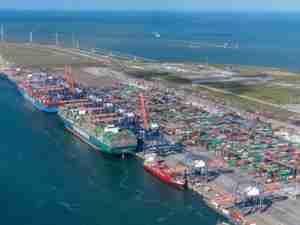“Retailers are still being cautious with their inventory levels in anticipation of slow sales this summer and into the fall,” NRF Vice President for Supply Chain and Customs Policy Jonathan Gold said. “The big question is what will happen during the fourth quarter. Our numbers for the fall are an improvement over the summer but are still lower than last year.”
US ports surveyed handled 990,632 Twenty-Foot Equivalent Units in April, the most recent month for which actual numbers are available. That was up 2% from March but down 22% from April 2008. After February (839, 492 TEU) and March (970,949 TEU), the figure was the third-lowest since the 901,497 seen in February 2004, and marks the 22nd month in a row to see a year-over-year decline. One TEU is one 20-foot container or its equivalent.
Volume for May was estimated at 1.03 million TEU, down 21% from a year earlier, and June is forecast at 1.06 million TEU, down 19% from last year. July is forecast at 1.1 million TEU, down 16%; August at 1.14 million TEU, down 17%; and September at 1.12 million TEU, down 18%. October – traditionally the peak of the annual shipping cycle as holiday merchandise flows into stores – is forecast at 1.15 million TEU, down 16%.
The first half of 2009 is now forecast at 5.9 million TEU, down 21% from the 7.5 million TEU seen in the first half of 2008. Total volume for 2008 was 15.2 million TEU, down 7.9% from 2007’s 16.5 million TEU and the lowest level since 2004’s 14 million TEU.
“Monthly cargo volumes are starting to creep up but the magnitude of the recessionary decline is clear when you compare this year’s numbers with last year’s,” IHS Global Insight Economist Paul Bingham said. “Import container traffic is projected to continue to be weak because of the underlying reduction in demand for goods during the recession.”
All US ports covered by Port Tracker – Los Angeles/Long Beach, Oakland, Seattle and Tacoma on the West Coast; New York/New Jersey, Hampton Roads, Charleston and Savannah on the East Coast, and Houston on the Gulf Coast – are rated “low” for congestion, the same as last month. (NRF/IHS)










